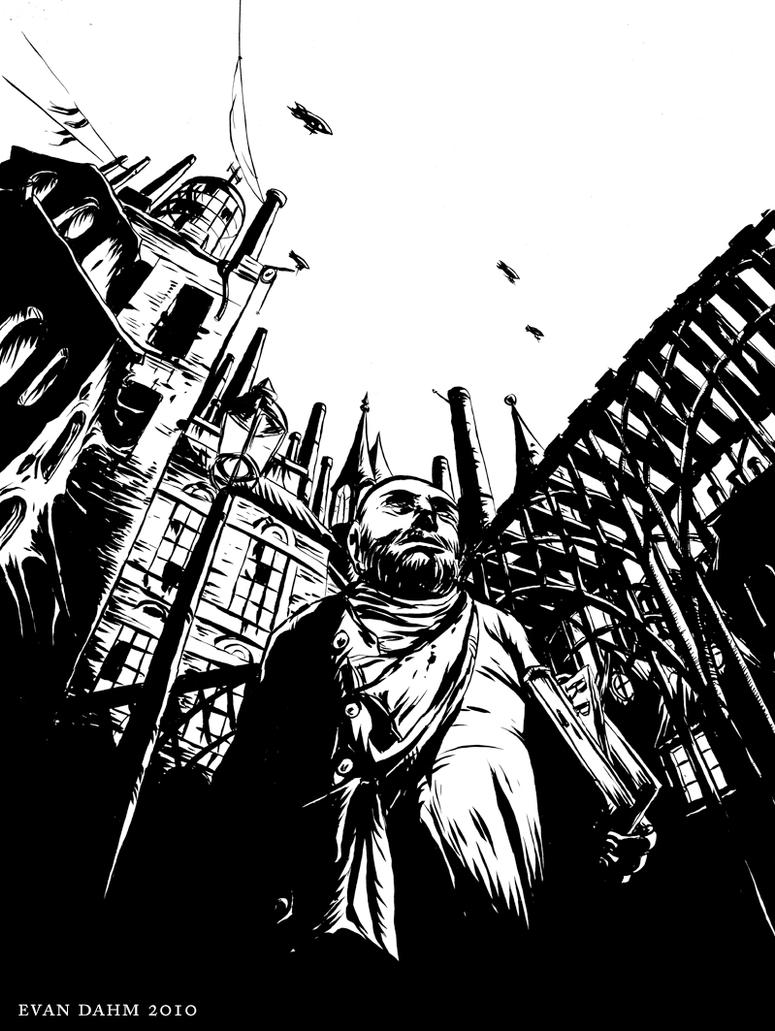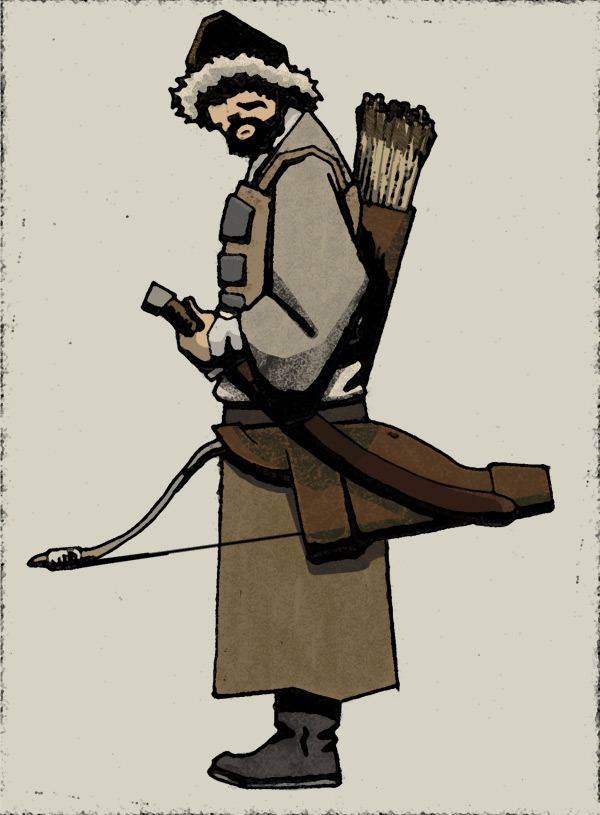The Fall of the Reman Empire
Reme at its height, 1559AUC
A thousand years ago, the known world, from Aratha to Soleille to Zwuyala, was ruled from the great city of Reme. From humble beginning as a city founded by twin orphans, Reme grew to become the largest city on the coin, its streets thronging with the press of a million citizens. Its legions and tribunes enforced a long era of peace and prosperity. Elven princes paid tribute to the Reman emperors, the first human rulers to be acknowledged on a more-or-less equal basis, and fought together with them in the War of the Lunar Frog and other great conflicts against evil. It seemed that, within the reach of Reme, the Coin's centennial cycle of great kingdoms rising only to be smashed by barbarians and black-hearted sorcerers had come to an end.
It was instead perhaps an interregnum. As peace reigned across Spindlewick, the Reman elites grew decadent and perverse, delving into the pursuit of obscene luxury. Taxes raised from the provinces that once paid the salary of the legionnaires now went straight to the banquet tables of senators and patricians. Border forts crumbled, the provinces went undefended, and the famous Reman roads fell into disrepair. Over the years, the Palace of the Ceasars was given over to a series of terrible Emperors, who alternated between mad, bad, and merely extremely corrupt. In 1889AUC, the Imperial family gave up on the whole game and decided to sell the entire Empire at open auction to the highest bidder.
This turned out to be not a very good idea.
The Not Very Light Ages
It was a bit shit all around, to be honest
In the chaos following the Leveraged Sell-Out, the remnants of the Empire collapsed as waves of barbarian invaders swarmed across the frontiers. Amongst them were the Bellagoths, a clan of female vampire-worshippers who would go on to establish the Republic of Orzovia, and the Ostremos, whose chieftain famously stopped at the gates of ruined Reme itself and declared it wasn't worth the effort of conquering. The elves retreated into their forests, the dwarves into their mountain halls. Spindlewick was plunged into an age of terror, decay, and barbarity.
In most of the former empire, this lead to several hundred years of petty kings, bandit chieftain, feudal squabbles, and general abuse of the peasantry. One remote province of the Empire, Cisrhania, was particularly devastated after the fall. As the Reman rule over the monstrous tribes of the Worse Lands collapsed, the dark sorcerer Morevac the Merciless gathered them together into an immense horde. In 1939AUC, his dark forces surged across the Rhâne river, and set the province alight from end to end. From his black tower of Rhâner Khal, Morevac consolidated his rule, condemning the province to oppression and darkness.
And thus it was, for more than five hundred years; enough time for the people of Spindlewick to forget the glories of the Reman Empire, and become accustomed to poverty, deprivation, and a general lack of joy. It would only be in the late 2400s, when a humble merchant from the tiny village of Waldorf-on-the-Rhâne fought off a tribe of goblin bandits in the Disenchanted Forest. Examining the corpses, the merchant, Astrid Kratzburg, was startled to discover that the straggly goblin bandits carried an immense amount of Reman jewelry, much marked with the paisley wreath of the Ceasars. When she followed the trail back to their makeshift camp, she was startled to discover that the original bearer bond granting dominion over the Reman Empire had been held within the hands of goblin bandits for the past three hundred years.
The Merchant Empress Rises
Astrid von Kratzburg, first Kaiserina of the Reunited Imperium
The young merchant had been a minor participant for some time in the underground resistance to Morevac's rule, and with this document, she saw the key to defeating him. With perhaps dubious legal grounding, but the best of intentions, she declared herself Empress of the Reman Empire, and set to gathering together a base of support. Her allies within the Cisrhanian underground were easy to convince; with the sale of much of the Reman crown jewels, she was even able to hire a reasonable number of mercenaries. A small army began to gather under her auspices on the outskirts of the Disenchanted Forest, but it would never be enough to defeat Morevac with his sorcerous supremacy and his monstrous allies. For that, she would need allies.
A plan was hatched. Years as a only somewhat honest merchant had given Astrid a keen eye for the credulous, and when Prince Relathio of the Dawnwind Elves came to her attention, she was ready for him. Relathio was a fine specimen of Elvish nobility; graceful, gallant, and about as gullible as a guppy. Using her newfound imperiousness, she convinced Relathio of the existence of an ancient treaty between the Reman Emperors and the Dawnwind Elves, promising martial assistance in times of need. Relathio and the Dawnwind Elves, who had in any case not particularly noticed the fall of the Reman Empire in the first place, gracefully acceded to assist.
With the support of the Dawnwind Elves guaranteed, nearby baronies flocked quickly to Astrid's banner. Haggling over the price of salted eels and spoiled eggs had given the new Empress better training in diplomacy than most noble academies, and she easily won the petty barons to her side with promises of autonomy within a new Imperial League. Even the burghers of Pyresburg were won to her side with trading concessions and fiery oratory. With her hard-won allies, the Empress was ready to free Cisrhania from the rule of Morevac.
A bickering collection of mercenaries, elven nobles, and petty militia would have been no match for the orcs, ogres, goblins, and monsters that made up Morevac's guards, let alone his mystic power. However, a Reman legion, led personally into battle by its Empress, turned out to be more than a match for the Shadow Over Cisrhania. In pitched battle upon the grassy fields before Waldorf-on-the-Rhâne, the League's forces shattered the armies of Morevac. Auxiliaries stormed his fortress of Rhâner Khal, freeing his tormented captives and destroying his obscene experiments. As he fled Cisrhania for Orghosh Pass and the Blackstone Mountains, Morevac himself was hunted down and captured by elven windrunners.
As Morevac hung from his noose in Waldorf's town square, Astrid Kratzburg, proclaimed the rebirth of the glorious Reman Empire; or to be more accurate, the birth of a new Imperium, more league than empire, more Cisrhanian than Reman, built not to service the needs of a single city but to protect the freedom of the many. And Waldorf-on-the-Rhâne, her home, the village held so long under the shadow of sorcerous rule, would be its new capital.
An Imperial Renaissance

The Rhânebridge at Waldorf
Under the rule of Empress Astrid, Waldorf would grow from a tiny thorp to a bustling burg, and her reborn Imperium would expand at a similar pace. Astrid established a framework that made it simple for baronies and petty kingdoms to join the league, without sacrificing any of their power. Kingdoms would become grand duchies within the league, with the right to send Electors to the Imperial College in Waldorf and choose the new Kaiser upon the death of the old. In return, they would gain trade concessions, open their borders to the elves, and membership in a pact of mutual protection. It was an appealing recipe, and it brought kingdoms into the new empire like seagulls to a picnic.
A new age of prosperity dawned in central Spindlewick. Merchants and pilgrims could freely travel the breadth of the Empire without concern for borders and tariffs. The elven forests were opened once more, and the dwarven holds reestablished their trade missions missions in the lowlands. Imperial levies held the dark tribes of the Worse Lands at bay, and even the raiders and pirates of the Friendly Sea kept to their hidden ports. A brief period of uncertainty reigned upon the death of Empress Astrid, but the confirmation as Kaiser of her son, Ulrich Remulus von Kratzburg, stilled any movements of discontent.
Ulrich proved just as capable a leader as his mother. In his reign, the wizarding academy of Phagemorts would be established to give the Imperium a sound source of sorcerous talent, and the first of many wars against against the Kingdom of Soleille would be fought and won. Later successors would establish a network of Imperial roads and canals, extend the reach of the Reman league to colonies in Zwuyala, Yonda, and further afield, and fight glorious wars against the enemies of the Grand Reman League.
Modernity and the Grand Reman League

A street-level view of modern Waldorf
Four hundred years after the death of the Empress Astrid, the empire she founded has lost none of its diversity and vibrancy, but perhaps it has lost most of the unity it once had. According to a commonly held saying, the Grand Reman League "is neither particularly grand, nor does it include the city of Reme within its borders, and is only a league in the sense of a grudgeball league, in that it is an excuse for its members to dress up in funny colours and beat the stuffing out of one another".
Its last real exhibition of unity was during the war against Soleille a hundred years ago, fought over the absorption of the crescent city of Languille as an Imperial electorate. The only wars that have been fought lately have been between duchies, not beyond the Empire's borders, and the current Emperor, Otto Herbert Kratzburg Franz von Sumpfkastell, also known as Otto the Useless, owes his election as much to the mutual hatred of the other candidates as it does to his delicate political marriage. Within the borders of the league, bandit chieftains and goblin tribes are becoming bolder than even before, attacking larger caravans and even small villages and baronies.
Still, the Grand Reman League is still the dynamic heart of Spindlewick; its workshops export manufactured goods to the entire continent, its finest sorcerers could match spells with any the Coin have to offer, its trading companies reach across oceans, and its distant colonies still pay heed and tribute to the motherland. As the Coin flips into a new age, it remains to be seen whether the future lies with the Ceasars of Waldorf, but it is almost certain that the pieces that make up the Reman League have important parts to play.
 Archer
Archer
.gif)




